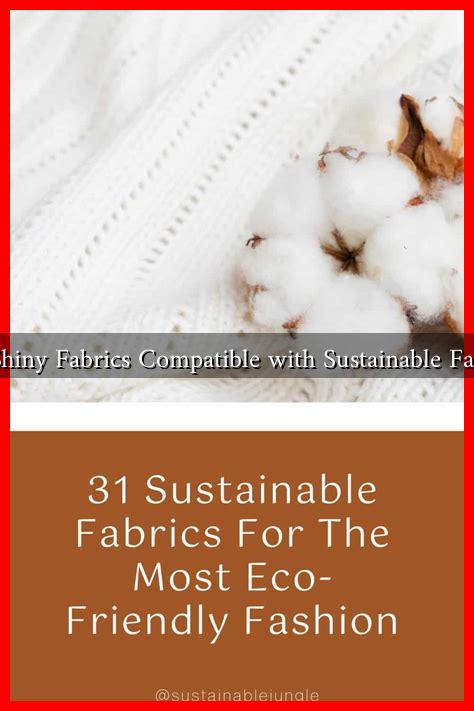-
Table of Contents
Are Shiny Fabrics Compatible with Sustainable Fashion?
In recent years, the fashion industry has faced increasing scrutiny regarding its environmental impact. As consumers become more conscious of sustainability, the question arises: can shiny fabrics, often associated with glamour and luxury, coexist with the principles of sustainable fashion? This article explores the compatibility of shiny fabrics with sustainable practices, examining materials, production processes, and consumer perceptions.
Understanding Shiny Fabrics
Shiny fabrics are typically characterized by their lustrous appearance and smooth texture. Common examples include satin, silk, and polyester blends. These materials are often used in evening wear, activewear, and accessories, appealing to consumers seeking a touch of elegance. However, the production and disposal of these fabrics can have significant environmental implications.
The Environmental Impact of Shiny Fabrics
Shiny fabrics can be made from both natural and synthetic fibers, each with its own environmental footprint. Here’s a breakdown of the two categories:
- Natural Fibers: Fabrics like silk and organic cotton are biodegradable and can be produced sustainably. However, traditional silk production involves significant water usage and can harm local ecosystems.
- Synthetic Fibers: Polyester and nylon, commonly used for their shiny finish, are derived from petroleum. Their production is energy-intensive, and they contribute to microplastic pollution when washed.
According to a report by the Ellen MacArthur Foundation, the fashion industry is responsible for 10% of global carbon emissions, with synthetic fibers playing a significant role in this statistic. The challenge lies in balancing the aesthetic appeal of shiny fabrics with their environmental impact.
Innovations in Sustainable Shiny Fabrics
Despite the challenges, there are innovative solutions emerging in the realm of shiny fabrics that align with sustainable fashion principles:
- Recycled Polyester: Brands like Patagonia and Adidas are leading the way by using recycled PET (rPET) to create shiny fabrics. This process reduces waste and lowers the carbon footprint associated with new polyester production.
- Bio-based Materials: Companies are developing shiny fabrics from bio-based sources, such as plant fibers or algae. For instance, the brand Tencel produces a shiny fabric from sustainably sourced wood pulp, offering a biodegradable alternative.
- Eco-friendly Finishing Techniques: Advances in dyeing and finishing processes can reduce water and chemical usage. Brands like Stella McCartney are pioneering these techniques to create luxurious, shiny fabrics without compromising sustainability.
Consumer Perception and Demand
Consumer attitudes towards shiny fabrics are evolving. A survey conducted by McKinsey & Company revealed that 67% of consumers consider sustainability when making fashion purchases. This shift in mindset is prompting brands to rethink their use of shiny materials.
Moreover, the rise of second-hand shopping and rental services has made it easier for consumers to enjoy shiny fabrics without contributing to fast fashion. Platforms like Rent the Runway allow users to wear high-end, shiny garments for special occasions without the environmental cost of ownership.
Case Studies: Brands Leading the Charge
Several brands are successfully integrating shiny fabrics into their sustainable fashion lines:
- Reformation: This brand offers a range of shiny dresses made from eco-friendly materials, emphasizing transparency in their production processes.
- Everlane: Known for its commitment to ethical manufacturing, Everlane has introduced shiny, sustainable fabrics in its activewear line, appealing to environmentally conscious consumers.
- Gucci: The luxury brand has launched a collection featuring shiny fabrics made from recycled materials, showcasing that sustainability can coexist with high fashion.
Conclusion
In conclusion, while shiny fabrics have traditionally posed challenges to sustainable fashion, innovative solutions and changing consumer perceptions are paving the way for compatibility. By embracing recycled materials, bio-based alternatives, and eco-friendly production techniques, the fashion industry can offer luxurious, shiny options that align with sustainability goals. As consumers continue to demand transparency and responsibility from brands, the future of shiny fabrics in sustainable fashion looks promising.
For more insights on sustainable fashion practices, visit Ellen MacArthur Foundation.



